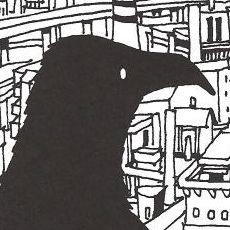Category: Editorials
-
Anime is dead
/
Read More →: Anime is deadTry to define anime. You can’t, because your definition is redundant.
-
Elitism on another level: pie-facing movie directors because they aren't "worthy"?
/
Read More →: Elitism on another level: pie-facing movie directors because they aren't "worthy"?I’ve just read this story at ANN and it really bothered me. Lately we’ve had all this talk about elitism in the anime community, but this one guy is on another level; for those who can’t be arsed to click the link, I’m talking about “Khyron Prime”; some one who, upon deciding that he hated…
-
Lelouch and Light: the era of yuppies with broken dreams
/
Read More →: Lelouch and Light: the era of yuppies with broken dreamsArt imitating life, I’m sure you’ve heard that one before; the idea that the thoughts and fears of our generation are somehow reflected in the art (and therefore, entertainment) that we create. Life now, at least in developed countries like Japan, North America and the UK, is a lot calmer than it was 50 to…
-
A few of the manliest death scenes EVER
/
Read More →: A few of the manliest death scenes EVERFair Warning: This article contains spoilers for Gurren Lagann, Fist of the North Star, Transformers: The Animated Movie and One Piece (Drum Island). In light of Kamina’s abrupt demise, I can’t help but ponder how his influential example would fair in a list of the manliest death scenes EVER! So what makes an every day…
-
Past, present and future
/
Read More →: Past, present and futureTo quote rubbish rockers Staind, it’s been a while. Of course I haven’t stopped watching anime, I just don’t have much to say. I could write boring episode reviews, but you know, that’s boring! More than anything I seem to rely on inspiration to write and the feeling now is that I’m either burnt out…
-
Standing on the brink of a new era, looking back at Naruto
/
Read More →: Standing on the brink of a new era, looking back at NarutoStanding on the brink of a new era for Naruto, I’ve turned back the clock to look at my favourite moments from the series; fair warning – hyperbolic fanboyisms ahead. I started watching the show in 2003 with a cheap 15″ CRT monitor and two tinny sound blasters, at the time I wasn’t interested in…
-
He's a man of rubber with an afro
/
Read More →: He's a man of rubber with an afroLuffy’s ultimate technique? Certainly, he’s wearing an afro!
-
Japan’s increasingly superficial pop culture?
/
Read More →: Japan’s increasingly superficial pop culture?Superflat is a new phrase I have discovered today. It sounds like an obscure 60s rock band but is actually a growing artistic movement subverting, rejecting and critiquing Japan’s increasingly superficial pop culture; often by lampooning it with artwork that features the cute, smiling face of a young anime character surrounded by or oblivious to…
-
Global culture infects the generations (with hip-hop)
/
Read More →: Global culture infects the generations (with hip-hop)Later today I’ll get to watch some raw anime — episode one of Afro Samurai. And this time the Japanese can fansub it. A perverse notion if ever I’ve heard one, but quite clearly Western culture is directly infiltrating (a nicer way of putting it would be influencing) Japan’s anime industry, inevitably resulting in an…
-
Observations of Everything: Bye-Bye November
/
Read More →: Observations of Everything: Bye-Bye NovemberStill hopelessly hooked on… Black Lagoon (2nd Barrage) Episode 19 and counting The bog-standard Naruto fillers would be a lot more interesting if they managed to nab the creative bastards working on Black Lagoon. With that said the 2nd season has often flattered to deceive and appears to be more content to up the ante…
